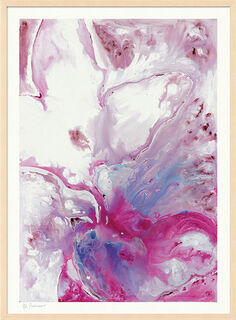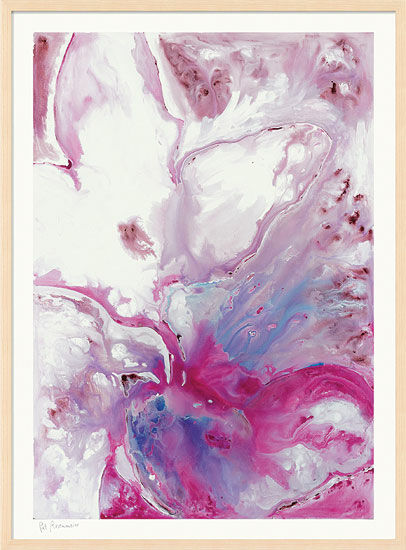Picture "Pink Magnolia" (2013), exclusive edition for ARTES


Picture "Pink Magnolia" (2013), exclusive edition for ARTES
Quick info
ARTES exclusive edition | limited, 20 copies | numbered | signed | fine art print on handmade paper | framed | size 103 x 76 cm
Detailed description
Picture "Pink Magnolia" (2013), exclusive edition for ARTES
Fine Art Print 2013, edition of 20 copies on handmade paper, numbered and signed by hand. Motif size 91 x 64 cm. Sheet size 100 x 73 cm. Size in frame 105 x 78 cm as shown. Exclusive edition for Kunsthaus ARTES.
About Pat Rosenmeier
For experts, Pat Rosenmeier, born in Stuttgart, Germany, in 1979, is among the great upcoming painterly talents of our time. She studied in Vancouver and has lived and worked in Miami and Munich since 2006.
Even though all modernist flower motifs seem to have been painted since Claude Monet, the German Canadian painter Pat Rosenmeier deliberately devotes herself to this subject. Rosenmeier's motive for painting is the act of painting itself, the pleasure of spreading paint on canvas. In a conversation with Henrik Lakeberg, Pat Rosenmeier explains: "I don't want to tell any real or surreal stories with my painting... I am interested in pure painting, in alchemical abstractions".
She is driven by the impulse of painting as a physical gesture, whereby her tools are rather coarse, following the tradition of abstract expressionists. Laying the canvases on the floor, her artistic work exploits the wide range of possibilities that painting offers in its liberated form. She controls chemical effects while allowing the unforeseen to happen. The lengthy process of creation requires repeated pauses in which the paint needs time to dry before the treatment is continued. Similar to a doctor blade process, the colours are pulled, pushed, and applied in predominantly short movements on the canvas.
The results are tableaux that challenge the eye, which with their unruly angularity and seemingly fought-for colourfulness are the best proof that floral still lifes also endure in contemporary painting.


